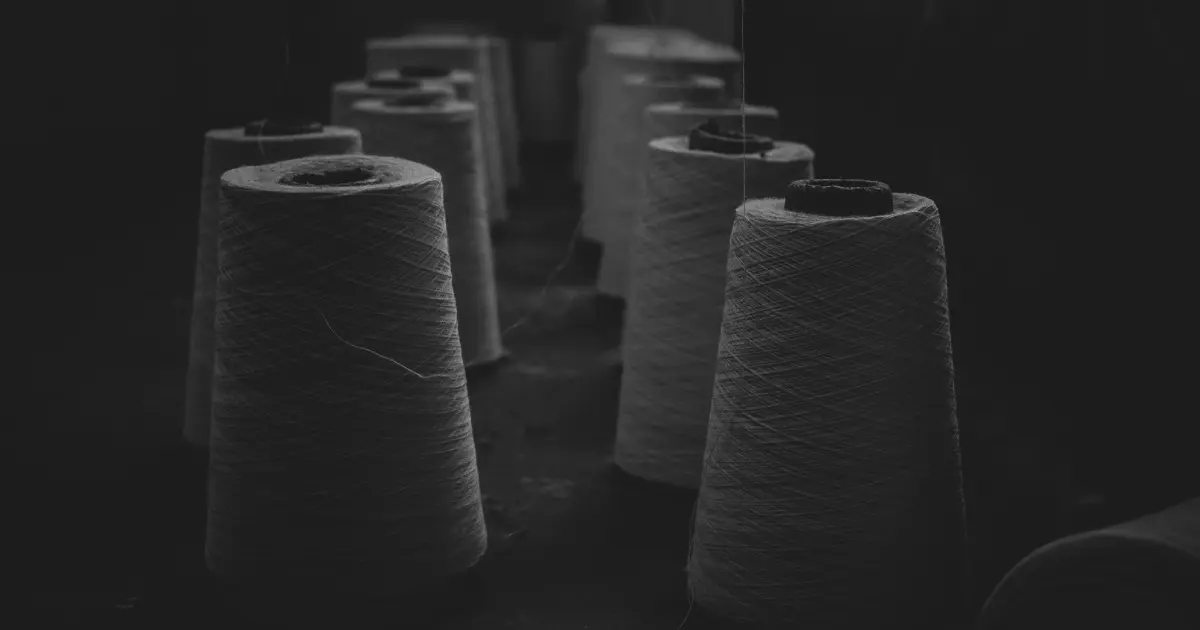

The shirt you're wearing or the sofa cover you're sitting on has an extraordinary story. The journey begins with fibres, the raw materials that lay the foundation for textiles. These fibres can be obtained from various sources, such as plants or animals, through processes like picking, shearing, or cocoon unraveling. Once harvested, the fibres undergo cleaning and preparation to remove impurities and align them for further processing. They are then transformed into yarn through spinning techniques like carding, combing, or twisting.
Although the terminology seems similar and familiar, there are striking differences between yarn and fabric that you need to know
In the world of textiles, yarn, and fabric are two essential components that play distinct roles in the creation of various products. While yarn serves as the raw material, the fabric is the finished product that we interact with on a daily basis.
Before we get started, let us understand their meaning.
Yarn can be defined as a continuous strand of fibres that are twisted or spun together to form a thread-like structure. It is the basic building block of fabrics and is available in various forms, including single-strand or multiple-strand structures. Yarn can be made from different materials, such as natural fibres (cotton, wool, silk, linen) or synthetic fibres (polyester, nylon, acrylic). The choice of yarn material depends on the desired properties of the fabric and its intended use.
Yarn is produced through a process called spinning, where fibres are twisted together to create a continuous thread. There are different spinning techniques, such as ring spinning, rotor spinning, and open-end spinning, each yielding yarns with unique characteristics. During the spinning process, fibres are often treated, cleaned, and processed to ensure consistency and quality.
Yarn finds applications in various industries, including textile manufacturing, fashion, and crafts. It serves as the primary material for creating fabrics, knitting garments, crocheting, and weaving. Yarn can be used to produce a wide range of products, including clothing, home textiles, accessories, upholstery, and even industrial materials. The choice of yarn type and thickness can greatly influence the characteristics and appearance of the final fabric.
Fabric is the end product that is created when yarns are woven, knitted, or felted together. It is the result of interlacing or inter looping yarns, forming a cohesive structure. Fabrics can have different textures, patterns, and properties, depending on the type of yarn used and the weaving or knitting technique employed.
Fabric production involves various processes such as weaving, knitting, or felting. Weaving is the most common method, where two sets of yarns, the warp, and the weft, are interlaced at right angles to create a woven fabric. Knitting involves inter looping yarns to form a series of interconnected loops, creating a flexible fabric structure. Felting is a process where fibres are matted together through heat, moisture, and agitation, resulting in a cohesive fabric. Each production method offers unique characteristics and allows for the creation of different fabric types.
The fabric has an extensive range of applications in our everyday lives. It is used for making clothing, bedding, curtains, upholstery, towels, and many other household and industrial items. Fabrics can be designed to be breathable, insulating, moisture-wicking, or water-resistant, depending on the specific requirements of the end product. The choice of fabric greatly impacts the comfort, durability, and functionality of the final product.
The fundamental difference between yarn and fabric lies in their form and purpose. Yarn is the raw material, a continuous thread made by twisting fibres together. It is the starting point for creating fabrics. On the other hand, fabric is the transformed yarn, the result of weaving, knitting, or felting yarns together to form a textile structure. Yarn is flexible and can be manipulated into various forms, while fabric is a cohesive structure with specific properties and characteristics.
While yarn is often sold in skeins or cones, fabric is available in rolls or bolts. Yarn can be further categorized based on its thickness, composition, and other properties, while the fabric is classified based on weave patterns, knit structures, or material types.
Understanding the difference between yarn and fabric is crucial for anyone interested in the textile industry. So, the next time you put on your favorite shirt or cozy up on the sofa, take a moment to appreciate the intricate journey that brought that fabric to life. From the humble fibres to the meticulously spun yarn, and the artful weaving or knitting, every step contributes to the creation of a textile masterpiece. Understanding the difference between yarn and fabric gives us a deeper appreciation for the craftsmanship and creativity behind the clothes we wear and the fabrics that adorn our lives.